Hip Osteoarthritis (coxarthrosis) — Hip Replacement and Rehabilitation: treatment in the Best Hospitals in the World
Treatment prices are regulated by national law of the corresponding countries, but can also include additional hospital coefficients. In order to receive the individual cost calculation, please send us the request and medical records.
Treatment of Hip osteoarthritis (coxarthrosis)
- Diagnostics
- Hip replacement
- Arthroscopic surgery
- Diagnosis and conservative treatment
- Endoprosthesis replacement in coxarthrosis
- Endoprosthesis replacement in coxarthrosis with rehabilitation
- Treatment with autologous conditioned plasma (ACP)
- Bilateral hip replacement
- Bilateral hip replacement and rehabilitation
- Autologous chondrocyte implantation (ACI)
- Orthopedic rehabilitation
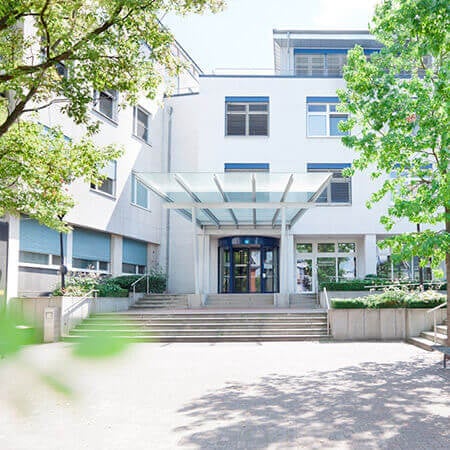
Department of Adult and Pediatric Orthopedics, Traumatology
The Department of Adult and Pediatric Orthopedics, Traumatology is part of the specialized Center for Musculoskeletal Disorders, whose medical team consists of highly qualified orthopedists, traumatologists, and spinal surgeons. The department offers modern diagnostics and treatment of the entire range of musculoskeletal diseases. The department's field of competence includes the treatment of injuries of varying severity. The therapeutic options cover both conservative measures and surgical interventions, which are mainly performed using sparing minimally invasive techniques. The treatment concept is based on the comprehensive approach – from the use of conservative methods to physiotherapeutic procedures the day after surgery.
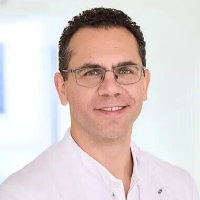


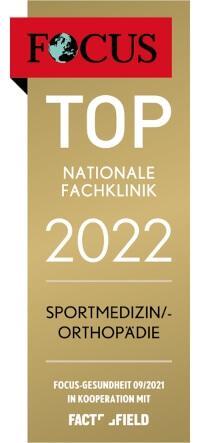
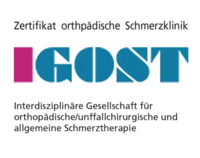
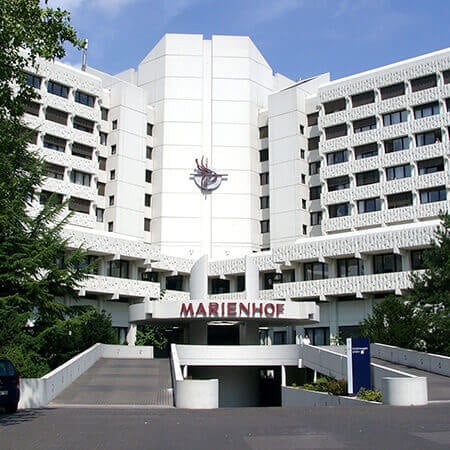
Department of Adult and Pediatric Orthopedics, Traumatology, Foot Surgery
According to the prestigious Focus magazine, the Department of Adult and Pediatric Orthopedics, Traumatology, Foot Surgery ranks among the top German medical facilities specializing in hip surgery! The department offers the full range of high-precision diagnostics and conservative and surgical treatment for diseases of bones, joints, muscles, ligaments, and tendons. One of the department's key areas of clinical practice is large joint arthroplasty. In this area, the department is awarded the prestigious endoCert certificate. The doctors in the department's operating rooms successfully perform knee, hip, and shoulder replacement surgery. Whenever possible, preference is given to minimally invasive joint replacement surgery. An important part of the work of the department's doctors is the treatment of orthopedic diseases and musculoskeletal injuries in children. The specialists at the medical facility also have long experience in helping patients with foot pathologies and deformities, including hallux valgus, hallux rigidus, hammer toes and claw toes, metatarsalgia, etc. The department's doctors have in their arsenal state-of-the-art equipment and modern treatment methods that allow for the achievement of excellent therapeutic results. More than 3,500 inpatients and about 17,000 outpatients are treated at the medical facility every year.
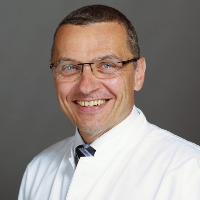

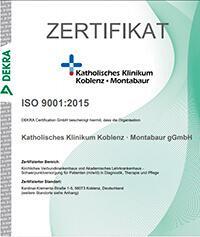
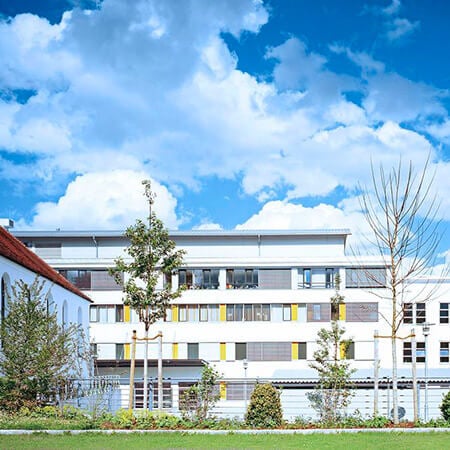
Department of Orthopedics, Traumatology, Spinal Surgery and Foot Surgery
According to the Focus magazine, the Department of Orthopedics, Traumatology, Spinal Surgery and Foot Surgery ranks among the top German medical facilities in treating orthopedic diseases and spinal surgery! The department carries out comprehensive examinations and effectively treats musculoskeletal diseases and injuries. The department has about 130 beds for its patient hospitalization. Doctors annually admit more than 4,000 patients for inpatient treatment. Several thousand surgical interventions of varying complexity are performed on the basis of the medical facility annually. The department offers the services of the certified Maximum Care Joint Replacement Surgery Center (EPZmax) and the certified Trauma Center. In addition, the department's specialists have vast experience in treating spinal and foot pathologies. The main goal of the department's doctors is to restore mobility and eliminate pain. The specialists always prefer an individual approach to each patient and his clinical case.
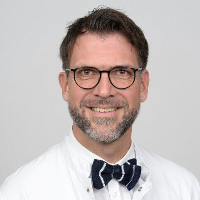


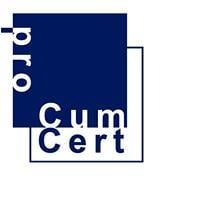

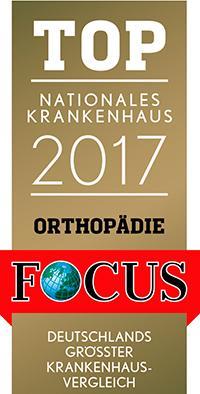
Coxarthrosis is one of the most common orthopedic diseases in the world. It continually progresses, causing chronic pain and disability. The main treatment for advanced coxarthrosis is hip replacement. You can get replacement surgery services abroad. Booking Health will help you choose the most suitable hospital, taking into account the quality of medical services and the cost of arthritis treatment.
Content
- Who may require hip replacement
- Preparing for surgery
- How is hip replacement surgery performed?
- Early rehabilitation
- Fast-track rehabilitation
- Rehabilitation after discharge from hospital
- Why is it worth having surgery in Europe
- Treatment in European hospitals with Booking Health
Who may require hip replacement
Hip arthritis progresses over years and even decades. In the early stages, the disease is often asymptomatic and can be detected only with the help of instrumental diagnostic methods. Pain then occurs only from time to time and is relieved with anti-inflammatory drugs. Therapeutic exercises, weight control and load limitation can help preserve the joint functions.
Nonetheless, the disease inevitably progresses. So far, there are no conservative therapies that can cure arthritis or at least improve the health of the joint. The only radical method that can solve the problem of arthritis completely is hip replacement surgery. After hip replacement and rehabilitation, a person does not feel any pain and can restore physical activity.
The hip is usually replaced in the advanced stage of the disease. During this period, the person can no longer do without a cane, and sometimes he is not able to walk at all. The pain can become severe and persistent. The pain that cannot be controlled with medications often becomes a reason for surgery.
Cost of hip replacement surgery in hip coxarthrosis is from €11,783. You can find prices for other treatment options and hip rehabilitation on the Booking Health website.
The best hospitals for the treatment of hip osteoarthritis in Europe are:
- University Hospital Rechts der Isar Munich
- University Hospital of Ludwig Maximilian University of Munich
- University Hospital Ulm
- University Hospital Frankfurt-am-Main
- Vitos Orthopedic Clinic Kassel
Preparing for surgery
In order to recover faster after hip replacement and minimize health risks, the patient should prepare for replacement surgery in advance. Here are some of the main recommendations:
- Quit smoking 1 month before hip replacement. Smoking affects blood circulation. It slows down the regeneration of hip tissue. In addition, smoking weakens the immune system, and therefore increases the risk of infection in the hip.
- Lose weight. The more body weight, the higher the load on the hip. Body mass index should not exceed 35, and it would be perfect if it was less than 30%. If your BMI is 40 or even more, hip replacement surgery may be contraindicated.
- Arms and abs workout. After hip surgery, the muscles of the upper body will be most loaded. They must be strong enough to withstand this load.
- Practicing skills. One should learn how to walk with support devices, move up steps, on an inclined surface, etc. Under the supervision of the medical staff, you will learn how to stand up, sit down, lie down, etc. All this will allow you to take care of yourself on your own within a few days after surgery, without the need for nursing care. Such patients are discharged from the hospital earlier.
1-2 days prior to surgery, the patient has to undergo a standard set of diagnostic tests. On the day before hip surgery, one must not eat after 6 pm. On the morning of the surgery, one must not even drink water.
How is hip replacement surgery performed?
The surgery is performed either under general or spinal anesthesia. The duration of the procedure is 1-2 hours.
The doctor removes the patient's own hip and implants an artificial endoprosthesis instead of it. It consists of a femoral and pelvic (acetabular) component.
The femoral component imitates the proximal (initial) part of the femur. It consists of a stem, a neck and a head. The pelvic component consists of a cup, inside which the head of the artificial femur will rotate, and a liner – it is usually made of polyethylene.
The doctor resects the bone tissue and implants the prosthesis. According to the method of its fixation, the hip replacement can be cemented and cementless. Whenever possible, the cementless method is used. The artificial joint is fixed with screws, and then it grows into bone. With concomitant osteoporosis, the doctor uses cement with the help of which he"glues" the artificial joint.
The final stage of surgery is wound suturing. Thin tubes (drains) may remain in it for 1-2 days. Blood and lymph (clear liquid) flows through them. This is necessary so that fluid does not accumulate in the tissues.
Early rehabilitation
Total hip replacement requires lengthy rehabilitation. It is necessary for the complete restoration of human mobility and work capacity. The rehabilitation period lasts up to six months. After this time, the patient can tolerate any stress that his general state of health allows.
After hip replacement, the leg is placed in the abducted position. A roller is placed between the legs for this purpose. An active mode in bed is allowed immediately after surgery. The patient can usually get up and walk the next day. The first time the patient gets up with the help of the medical staff, and then he learns to move on his own.
The very first bandaging is made the next day. Later on, the bandaging is made every 2-3 days, until the surgical wound is completely healed.
After replacement surgery, prevention of complications is required. To reduce health risks, the patients take antibiotics. They help prevent infection. The doctors give injections of anticoagulants and bandages on the legs to reduce the risk of thromboembolic complications.
Things to remember after surgery:
- In the early rehabilitation period, one can sleep only on the back.
- One should turn over only by holding the roller between his legs.
- Both knee and hip joints should not be bent more than 90 degrees.
- One can not make rotational movements in the hip.
- Any sudden movements must be avoided.
If the cementless method of fixation was used, one must not stand on the operated leg during the first week. The patient can only touch the floor with it. Starting from the second week, it is allowed to transfer 15-20% of body weight to the operated limb, while half load is allowed only from 3 weeks.
After total hip replacement, the doctor sutures the wound. The surgical sutures are removed after about 2 weeks. Sometimes it is possible not to remove them. Some doctors use threads that dissolve on their own over time.
Fast-track rehabilitation
In some foreign hospitals, recovery after hip replacement is carried out using a fast-track program. It was developed and introduced in Denmark at the beginning of the 21st century, and then gained recognition and began to be used in Western Europe and the USA. This protocol not only shortens recovery times, shortens hospital stays, but also makes replacement surgery safer for health by reducing the risk of complications.
Rehabilitation begins even prior to surgery. The patient is trained to walk with crutches or walkers, get up and walk correctly, climb up and down stairs.
When performing surgery, the doctors do not use general anesthesia, but spinal one. The sensitivity of the lower half of the body is completely "turned off" at the level of the spinal cord. In addition, sedation is used so that the patient is not stressed and can sleep during the surgical procedure.
Spinal anesthesia promotes early activation. It is possible within 2-4 hours after surgery, while after general anesthesia – only the next day.
In order for a person to start walking in the first hours after surgery, it is important that he does not feel severe pain. To do this, immediately after hip replacement, local anesthetics are injected into the soft tissues. Anesthetics continue to be administered through the catheter throughout the day. They reduce the sensitivity of the tissues in the area of surgery. The scheme includes analgesics for oral administration. Whenever possible, the doctors use only nonsteroidal anti-inflammatory drugs, but opiates are used if necessary.
It is important to maintain normal blood pressure to prevent falls because of dizziness. It can occur when the body position changes from horizontal to vertical. To do this, the patient drinks a lot of fluids immediately after surgery. Whenever required, additional fluid is administered by intravenous infusion.
The patient is wearing compression stockings. Elastic bandages compressing the legs reduce the risk of thromboembolic complications. In addition, the effect of local infiltration anesthesia is enhanced and prolonged, since the analgesic substances are more slowly "washed out" from the tissues.
On average, the patients stay in the hospital for only 7 days, although sometimes the period varies greatly from patient to patient – from 3 to 11 days. In each case, the doctors make a decision individually. The patient is discharged only when his health is no longer threatened. Discharge criteria:
- Ability to self-care.
- Ability to get out of bed, sit in a chair and get out of it.
- Ability to move with crutches at a distance of at least 70 m.
Rehabilitation after discharge from hospital
Total hip replacement requires long-term rehabilitation. Although it begins while still in the hospital, rehabilitation activities continue for several months. The patients can stay in the rehabilitation center all the time or visit it every day.
A substitute for professional recovery is home workouts. But it is advisable to switch to independent workouts no earlier than 2 months later, when you have mastered all the exercises, and the health risks will decrease.
The rehabilitation of patients is no less important than the quality of treatment abroad. It is the effectiveness of rehabilitation that determines the quality of life after total hip replacement. The patient's activity, the condition of the thigh muscles, range of motion, gait and motor skills depend on it.
Here are some basic rehabilitation measures in the first 2 weeks after hip replacement surgery:
- Exercises to prevent blood stasis, reduce swelling, and accelerate wound healing. It is advisable to devote all free time in the hospital to physical therapy. Most of the exercises are done while lying in bed.
- Massage helps to improve blood circulation in tissues.
- Physiotherapy promotes wound healing, elimination of puffiness.
At all stages of rehabilitation, it is physical therapy that becomes the main way to restore a person's mobility. It allows rebuilding the thigh muscles and improving the function of the hip.
Passive joint training doesn't make sense. The artificial prosthesis is very mobile, while friction in it is minimal. The range of motion depends solely on the muscles of the thigh, and therefore they need to be trained.
Foreign rehabilitation centers have state-of-the-art equipment. The doctors have at their disposal advanced fitness machines and robotic systems, gyms and swimming pools. The rehabilitation program is developed individually and periodically adjusted. The specialists carefully monitor that the loads are sufficient, but safe for health.
Why is it worth having surgery in Europe
Hip replacement is the most common orthopedic surgery. It is performed in any country. However, developed countries are using new technologies, so the operations here are not only more effective, but also safer for health.
The cost of treatment may be higher than in your native country, but due to the reliability of surgery, the total cost of medical services can be lower. Firstly, in a good hospital, the risk of complications will be minimal, so you will not have to undergo repeated surgery to eliminate the consequences of poor quality treatment. Secondly, the prosthesis is implanted with the highest accuracy, and it is of high quality. After hip replacement, the artificial joint will not wear out throughout life. You will not have to do a second operation in the future, and therefore you will not have to pay for this surgery.
The main benefits of treatment in the best European hospitals:
- The efficiency of surgery is 97%, with a global average of about 90%.
- Minimal risk of infectious complications – the most common reasons for repeated surgery in the first year after hip replacement.
- The use of high-quality prostheses with a service life of tens of years.
- Accurate diagnostics and individual selection of prosthesis components.
- High technologies: if necessary, the parts of the prosthesis are made individually, using a 3D printer.
- Fast-track rehabilitation programs after hip replacement reduce hospital stays to 4-7 days and improve the safety of treatment for health by reducing the risk of complications.
After hip replacement in Europe, you can undergo rehabilitation. The well-equipped rehabilitation centers can fully restore physical activity and work capacity.
Treatment in European hospitals with Booking Health
To undergo treatment in European hospitals, you can use the services of Booking Health. On our portal, you can find out the cost of treatment in different hospitals, compare prices and profitably book a medical program.
Please contact Booking Health specialists to travel to European hospitals for treatment. Here's what we will do for you:
- We will select the best European hospital, whose doctors specialize in hip replacement surgery.
- We will help you overcome the language barrier, establish communication with your doctor.
- We will reduce the waiting time for the start of the medical program and book it on the most suitable dates.
- We will lower prices. The cost of treatment in European hospitals will be decreased due to the lack of coefficients for foreign patients.
- We will settle down all the organizational issues: documents for entering the country, transfer from the airport, hotel, interpreter, etc.
- We will prepare a program and translate medical documents. You do not have to repeat the diagnostic procedures that you have already had.
- We will provide communication with the European hospital after the completion of the medical program.
- If necessary, we will organize additional medical examinations and treatment in European hospitals.
- We will buy medicines abroad and send them to your native country.
- We will help you keep in touch with the European hospital after the completion of the program.
Booking Health makes treatment in European hospitals easier, faster and cheaper. We will fully organize your trip, and you will only have to focus on restoring your health.
Authors: Dr. Nadezhda Ivanisova, Dr. Sergey Pashchenko

